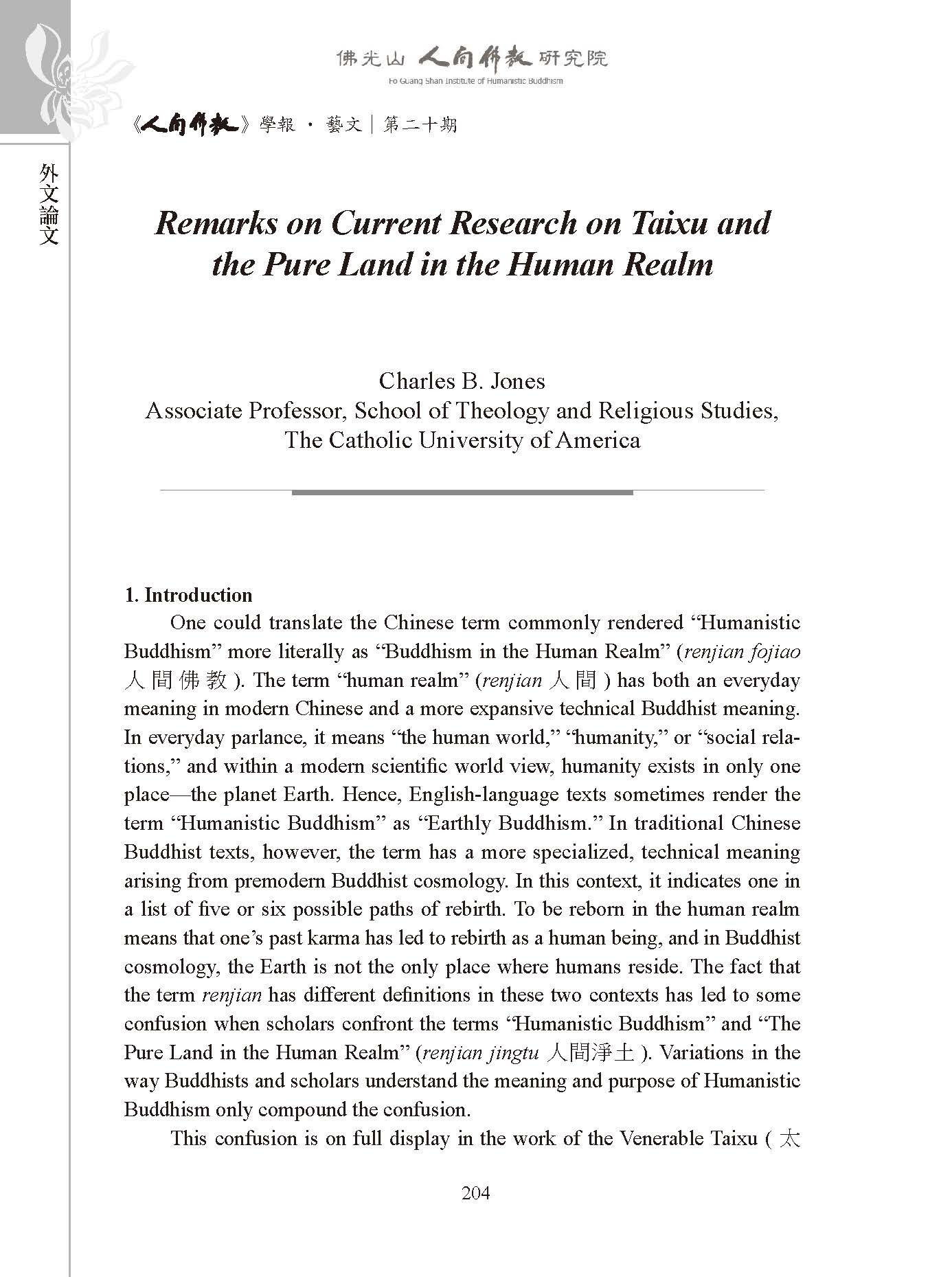
|
Remarks on Current Research on Taixu and the Pure Land in the Human Realm
分類
論文
期別
《人間佛教》學報‧藝文第20期
作者
Charles B. Jones
編者
妙凡、蔡孟樺主編
摘要
One could translate the Chinese term commonly rendered “Humanistic Buddhism” more literally as “Buddhism in the Human Realm” (renjian fojiao 人間佛教). The term “human realm” (renjian 人間) has both an everyday meaning in modern Chinese and a more expansive technical Buddhist meaning. In everyday parlance, it means “the human world,” “humanity,” or “social relations,” and within a modern scientific world view, humanity exists in only one place—the planet Earth. Hence, English-language texts sometimes render the term “Humanistic Buddhism” as “Earthly Buddhism.” In traditional Chinese Buddhist texts, however, the term has a more specialized, technical meaning arising from premodern Buddhist cosmology. In this context, it indicates one in a list of five or six possible paths of rebirth. To be reborn in the human realm means that one’s past karma has led to rebirth as a human being, and in Buddhist cosmology, the Earth is not the only place where humans reside. The fact that the term renjian has different definitions in these two contexts has led to some confusion when scholars confront the terms “Humanistic Buddhism” and “The Pure Land in the Human Realm” (renjian jingtu 人間淨土). Variations in the way Buddhists and scholars understand the meaning and purpose of Humanistic Buddhism only compound the confusion.
引文
Charles B. Jones:〈Remarks on Current Research on Taixu and the Pure Land in the Human Realm〉,收入妙凡、蔡孟樺主編:《人間佛教》學報‧藝文第20期,高雄:財團法人佛光山人間佛教研究院,2019年 03月,頁204-213。
全文下載











